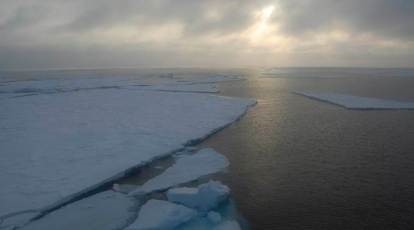Global Sea Ice Hits Record Low, Raising Climate Concerns
Why in the News?
Global sea ice cover has reached a record low of 15.76 million sq km as of February 13, 2025. Scientists attribute this decline to warmer oceans, stronger winds, and extreme weather events, raising concerns over climate change and global warming.
Recent Decline in Sea Ice:
- The combined Arctic and Antarctic sea ice extent reached a record low of 76 million sq km by February 13, 2025, as per data from the US National Snow and Ice Data Center (NSIDC).
- This is lower than the previous record of 93 million sq km in early 2023.
- Sea ice differs from icebergs, glaciers, ice sheets, and ice shelves, as it forms directly on the ocean surface and plays a crucial role in regulating Earth’s temperature.
- The loss of sea ice reduces the planet’s ability to reflect sunlight, contributing to global warming.
Reasons Behind the Decline
- Arctic sea ice is currently at its lowest extent for this time of year, while Antarctic sea ice is also nearing a record low.
- Since the late 1970s, around 77,800 sq km of sea ice has been lost annually.
- Arctic ice melting is linked to delayed freezing due to warmer ocean temperatures, particularly in Hudson Bay.
- Antarctic ice loss has been worsened by stronger winds breaking thinner ice sheets and warmer ocean currents.
- Extreme weather events, such as storms in the Barents and Bering Seas, have further contributed to ice fragmentation.
Implications of Reduced Sea Ice
- More ocean exposure leads to increased absorption of solar radiation, accelerating global temperature rise.
- Polar regions are warming faster than other parts of the world due to reduced ice reflection.
- Melting sea ice affects global ocean circulation, as freshwater influx lowers salinity and density, potentially disrupting marine ecosystems and climate patterns.




